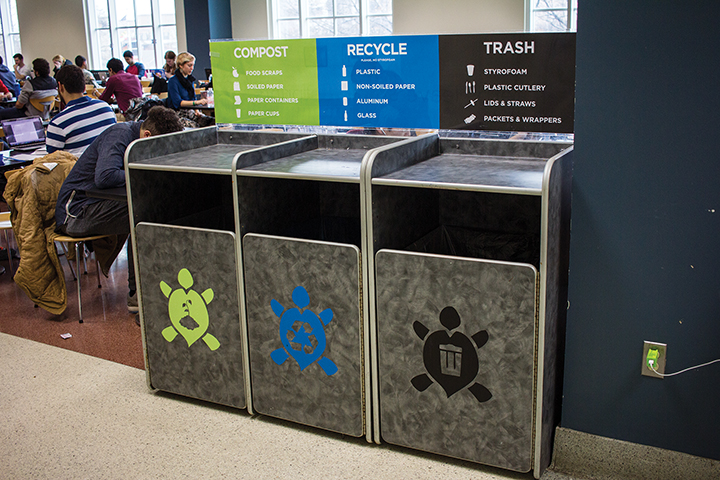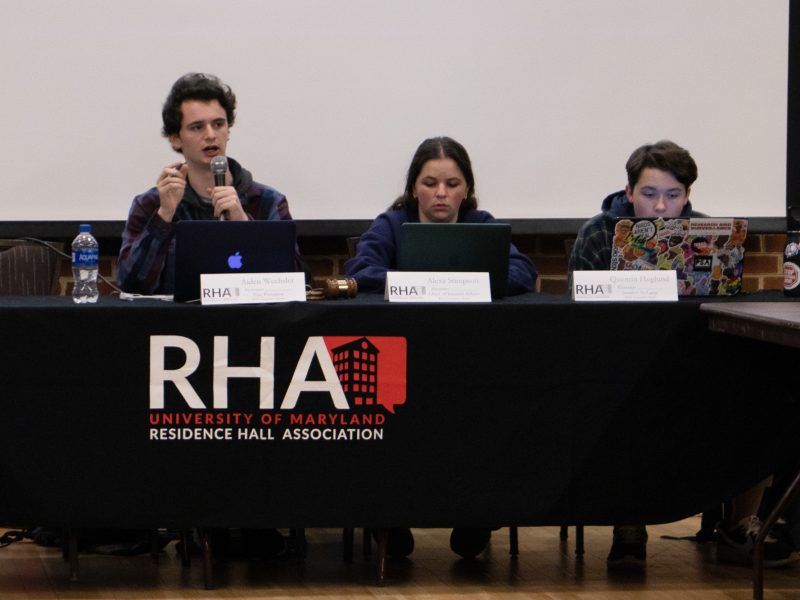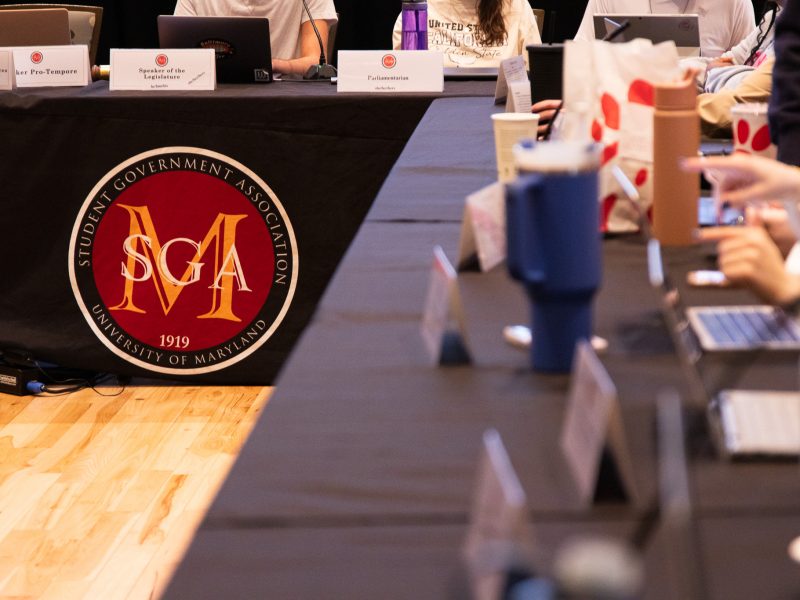Last year, the University of Maryland experienced decreased landfill diversion rates nnd individual recycling rates compared to 2014 rates, according to university officials.
The university’s total landfill diversion rate fell from 89 percent in 2014 to 83 percent in 2015, said Bill Guididas, University Recycling and Solid Waste Program coordinator.
However, the decrease in the diversion rate — the amount of waste on the campus that is collected for recycling instead of being put in a landfill — does not worry Guididas, who noted that 2014’s high diversion rate was partly due to increased construction on the campus, such as demolition for the Edward St. John Learning and Teaching Center.
“The year before we had a lot of buildings that were demolished and more construction,” Guididas said. “Now some of those projects are entering the building phase, and there is less waste to be diverted.”
There has been an increase in efforts to divert landfill waste, and “hopefully some of it gets recycled and reused in construction,” said Bill Olen, executive director of design and construction. “It is a great sustainable effort that is going on.”
The decrease in construction in 2015, however, does not account for last year’s decrease in the individual recycling rate, which excludes construction waste. In 2015, 47 percent of individual waste was diverted, while in 2014 the rate was 54 percent, Guididas said.

In 2015, the landfill diversion rate at this university was 83 percent, a decrease from the previous year. (Graphic by Shannon Gallagher/The Diamondback)
The decrease for the individual rate was in response to the shutdown of the disposal site that this university previously used and the new processor’s more stringent requirements that “took a while to adjust to,” Guididas said.
Overall, however, the total waste diverted has more than tripled in the past 10 years — the rate was 25 percent in 2005. The individual diversion rate has doubled since 2005, when it was 23 percent, Guididas said.
This university reached its target goal, outlined in the 2009 Climate Action Plan, of 75 percent total waste diverted in 2013. The new goal, Guididas said, is to maintain that.
“For years we were focused on collecting more and more waste, but now we are focusing on the cleanliness of the material collected,” said Andrew Muir, a sustainability office spokesman. “This year’s theme is ‘Clean The Stream.’ … Collections are strong, and we know for the most part where there’s a recycling bin … but not everyone knows what can and cannot be recycled.”
“Clean the Stream” posters can be seen in the dining halls, Stamp Student Union and in resident halls. The posters outline what should and should not be recycled.
The focus is now on what is most likely to cause contamination, Muir said. Items that cannot be recycled include plastic bags, Styrofoam, small plastics such as straws and lids for drink containers and coffee creamer cups.
“Even if someone’s drink container is recyclable, they don’t realize they should dump out the food and liquid before recycling,” he said. “The theme goes along with the fact that people want to recycle and we want to ensure that they recycle properly.”
The recycled material is about 90 percent clean, Muir said. The main issue is that students put certain items in the wrong bins, such as putting something compostable into the recycling bin or putting something recyclable into the trash.
“It’s up to everyone that the right material goes into the right bin, and all we can do is collect it and see where it goes,” he said.



